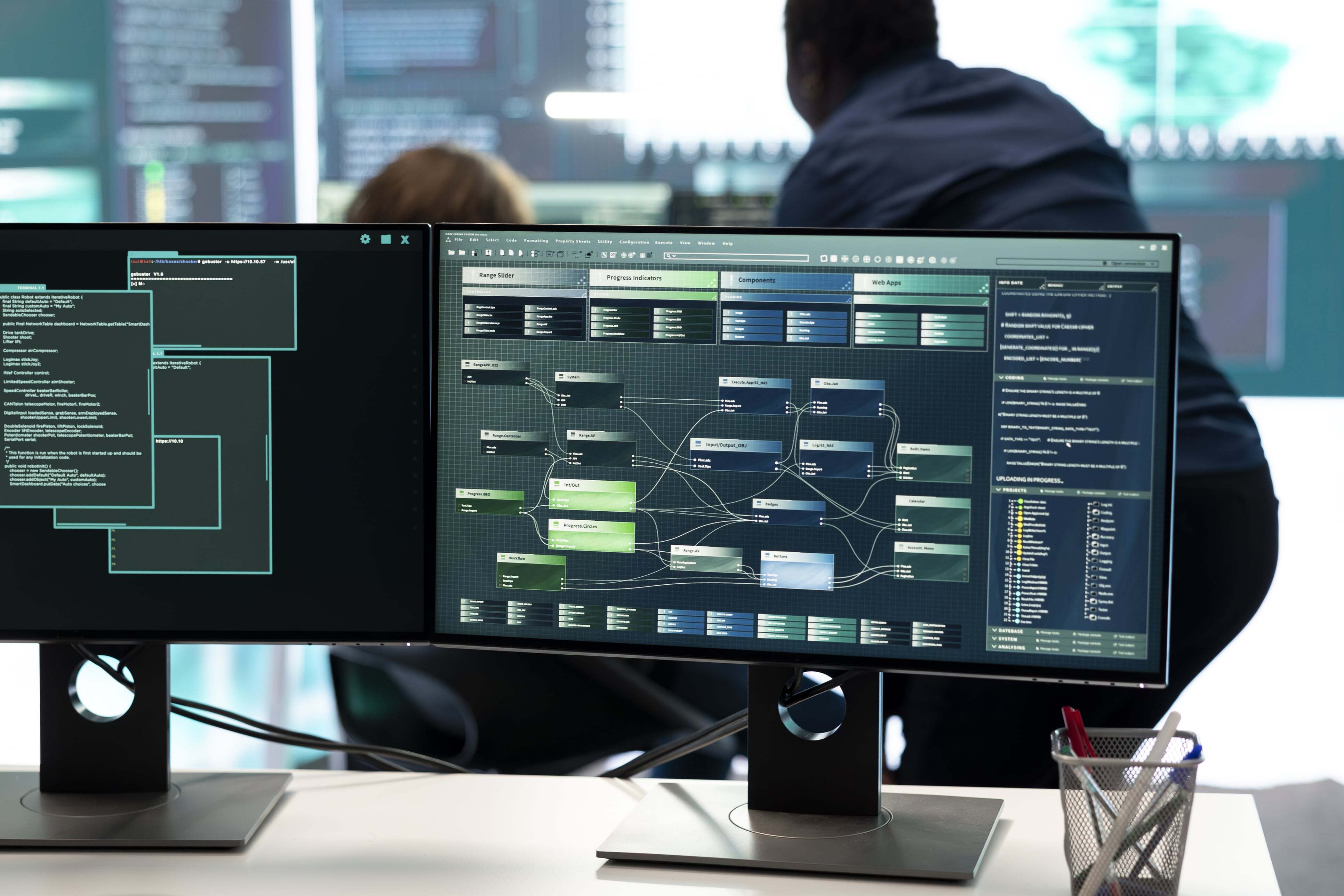A single view of security, application, and third-party service provider events is crucial for healthcare organizations to reduce overall business risk. It provides visibility into the environment and helps identify potential threats and attacks. Implementing technologies like Security Information and Event Management (SIEM) solutions can aid in achieving this objective. The SIEM's role expands further in the healthcare industry as it assists in meeting compliance requirements and streamlining security operations while providing a comprehensive view of security events.
The following few reasons your organization should consider a single view into your environments:
- Provide a central role in event collection - a single point of truth
- Used as a pillar for compliance - more accessible evidence collection
- Streamlining tools to enhance efficiency - one tool to rule them all
- Provide standard metrics for all departments - speak one language
The Role of Security Information and Event Management (SIEM)
SIEM, or Security Information and Event Management, is a solution that enables organizations to collect, analyze, and correlate data from various sources to detect and respond to events in real-time. If set up correctly, SIEM solutions provide a holistic view of an organization's security posture by collecting data from multiple sources, including firewalls, intrusion detection and prevention systems, endpoint protection solutions, third-party Software as a Service (SaaS) providers, and more. Organizations can monitor security events in real-time, identify anomalies, and respond to security incidents promptly; however, these solutions also provide event log management capabilities, allowing organizations to store and analyze logs for compliance and forensics.
One of the significant advantages of SIEM is that it provides a centralized view of security events across the healthcare organization's environments for any department. This is particularly important in the healthcare industry, where data breaches, including Personal Healthcare Information (PHI) losses, can have significant consequences. With a SIEM solution, healthcare organizations can monitor their entire organization and identify security events that may indicate an issue, such as misconfigurations or invalid sign-in attempts. SIEM solutions can also prioritize incidents based on severity, enabling security teams to respond to critical events promptly. Additionally, tech and security resources can automate incident response workflows, reducing the time to detect and respond to incidents and improving overall security posture. Healthcare organizations can ensure the confidentiality, integrity, and availability of their sensitive data and systems with the visibility gained by these strategies.
Compliance Audits and Event Collection
Healthcare organizations must meet compliance regulations such as HIPAA, HITRUST, HITECH, NIST, FedRAMP, and others to ensure PHI's confidentiality, integrity, and availability. SIEM tools are crucial in assisting healthcare organizations in meeting these compliance requirements and monitoring all network and system activities sent to them to detect potential security threats. These tools also provide automated reporting capabilities that help healthcare organizations identify and quickly address security issues and vulnerabilities in their systems. Analyzing log data from various sources enables organizations to recognize suspicious activities and promptly respond to potential threats, which healthcare compliance regulations require.
The role of SIEM in automating the collection and reporting of security data for audits is also significant. SIEM tools, like Splunk and Microsoft Sentinel, can automate collecting and aggregating data from various sources, such as network devices, servers, and applications, providing a comprehensive view of an organization's security posture. This information is critical for compliance audits, and SIEM tools provide automated reporting capabilities that can generate reports in a standardized format. For example, healthcare organizations must track and log user activities and create audit trails to ensure regulation compliance. With SIEM tools, healthcare organizations can streamline compliance processes, reduce non-compliance risk, and avoid costly fines and penalties.
Reducing Business Risk through Effective Security Operations
Effective security operations are vital for reducing business risk and ensuring the smooth operation of healthcare organizations. Security events such as data breaches, cyber-attacks, and ransomware severely affect healthcare organizations' operations and reputations. Such incidents can go unnoticed for months unless a system is in place to make them visible. Healthcare organizations can mitigate these risks and protect their PHI by implementing security operations teams and tools to aid them.
As discussed above, healthcare organizations should leverage Security Operations and SIEM strategies to mitigate risks and protect patient data. These strategies involve using technologies, teams, and tools to monitor, detect, and respond to real-time security threats. By leveraging these strategies, healthcare organizations can collect and analyze vast amounts of data from different sources, such as network devices, servers, and applications, to identify anomalies and potential security threats. With this information, security teams can take proactive measures to prevent possible threats and respond immediately to any incidents, reducing the impact of security events and providing cybersecurity risk management. Furthermore, Security Operations and SIEM strategies can help healthcare organizations comply with regulatory requirements and industry standards, such as HIPAA, HITRUST, NIST, FedRAMP, and HITECH, which mandate the protection of patient data.
Managing and Reducing the Number of Security Tools
Managing and reducing the number of security tools is crucial in healthcare IT environments. An increasing number of technology tools or services can lead to various challenges in controlling and monitoring the organization's technology posture. It can be overwhelming for IT staff to keep track of multiple security tools, leading to gaps in the security posture. The lack of uniformity in tools can also cause confusion and inefficiencies in managing security incidents. Therefore, it is essential to streamline and consolidate security tools to enhance visibility and control over the security posture.
One of the main challenges of managing an increasing number of security tools is integrating and correlating data from different tools. The lack of integration can cause data silos, where important security data becomes trapped in multiple isolated tools. This can lead to a lack of visibility into the overall security posture, making it challenging to identify and respond to security threats. By reducing the number of security tools and consolidating them into a single view, tech or security resources can gain a comprehensive view of the security posture, enabling them to promptly identify and respond to security threats.
Lastly, streamlining tools is also essential for improving efficiency and reducing costs. With fewer management tools, IT staff can focus on controlling and monitoring the security posture more effectively. This can decrease the time and resources required to manage security tools, resulting in cost savings for the organization. Moreover, a single view of the security posture can help IT and security resources prioritize security incidents based on severity, reducing the time required to respond to critical incidents. Streamlining security tools can help healthcare organizations enhance security posture, improve efficiency, and lower costs.
Monitoring and Protecting Internet of Things (IoT) Devices
The increasing use of IoT devices in healthcare brings benefits like improved patient care and remote monitoring but also presents significant security challenges. Many IoT devices have weak security protocols, making them vulnerable to hacking and data breaches. It can be challenging to detect when an IoT device has been compromised, as they often lack the necessary security features to alert administrators.
Creating a single view or dashboard for everyone to monitor the following IoT metrics is critical to reducing healthcare risk.
- Implement strategies for monitoring events on devices
- Perform regular vulnerability assessments can help identify potential security risks
- Implement robust security protocols such as encryption, authentication, and access control around devices and consume events generated
- Monitor access to sensitive data by devices, including metadata where possible
The Importance of Rapid Response Teams
In cybersecurity, the potential for a security breach is always present. When such an event occurs, the consequences can be devastating for organizations financially and in terms of reputation. Rapid Response Teams in a Security Operations Center (SOC) are specially trained to respond to security breaches in real time, minimizing damage and restoring services as quickly as possible. These resources are necessary for monitoring to be useful, as no one is responsible for acting on an alert.
Rapid response teams operate within the larger framework of Security Operations. They work closely with other teams within the organization, including incident response, forensic, and legal teams, to ensure a coordinated response. Their primary role is to contain the breach, prevent further damage, and restore services promptly. They do this by analyzing the situation, identifying the breach's root cause, and implementing measures to prevent similar events. By working collaboratively and efficiently, rapid response teams can help organizations mitigate the effects of a security breach and get back to business as usual.
Final Thoughts
Creating a centralized view of security events gives healthcare organizations the visibility they need into overall healthcare risk across their network and enables them to monitor security events in real time, identify anomalies, and promptly respond to security incidents. Leveraging SIEM solutions like Splunk or Microsoft Sentinel also helps healthcare organizations meet compliance requirements by providing real-time monitoring of all network and system activities, automating the collection and reporting of security data for audits, and generating audit trails to ensure compliance with regulations. Additionally, by leveraging Security Operations and SIEM strategies, healthcare organizations can reduce business risk, protect patient data, and comply with regulatory requirements and industry standards. You should evaluate how your SIEM solutions perform to ensure the confidentiality, integrity, and availability of sensitive data and systems in the healthcare industry.
Need help putting governance in place to manage risk?
Risk management is integral to the cybersecurity, governance, and IT compliance strategy an organization puts in place to protect sensitive assets. Steel Patriot Partners focuses on implementing the best practices discussed above with organizations to significantly enhance their ability to quickly identify, assess, and mitigate business risks. Aligning risk management processes and creating a single view into your environment with governance and compliance frameworks is a complex and lengthy initiative; however, it ensures that cybersecurity efforts become integral to the organization's overall risk management strategy. Steel Patriot Partners keeps up with evolving threats, implementing robust controls, and maintaining compliance reporting; organizations can establish a proactive approach to cybersecurity risk management and safeguard their digital assets. Schedule a time to discuss how Steel Patriot Partners makes risk management less complex for your organization.



